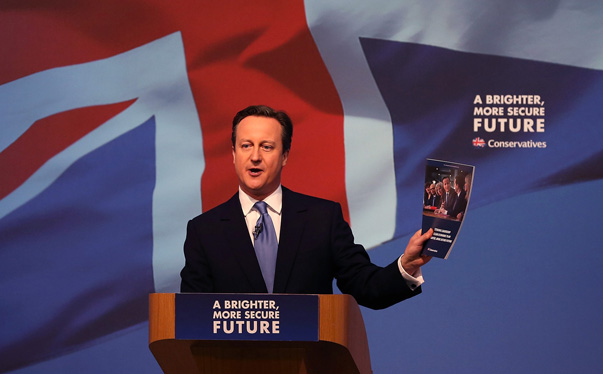It’s the one big “rabbit-out-of-the-hat” idea from the Conservative election manifesto – and a promise that revisits one of Margaret Thatcher’s most famous policies.
A Conservative government would extend the “right to buy” your council house at a heavy discount to people who live in housing association properties.
About 1.3 million households are being dangled a carrot worth more than £100,000 for some, paid for by selling off the most expensive council houses.
But critics are lining up to cast doubt on the economics of the scheme. Here’s what we know so far…
Whose idea is this?
The think-tank Policy Exchange first floated the basic idea of forcing councils to sell off their most valuable social housing in this 2012 paper. The author, Alex Morton, is now a Downing Street special adviser on housing and planning policy.
The basic problem, as Policy Exchange saw it, was that councils were sitting on properties worth more than private homes in the same area. Some London councils had houses worth millions on their books.
The suggestion was that if local authorities sold some of their most valuable housing, they could build more new homes elsewhere.
That didn’t mean kicking out the tenants and selling the stock all at once. You would sell about 28,500 properties a year as they became vacant, raising about £4.5bn.
This is still a substantial amount and could fund a lot of extra housing, according to Policy Exchange. Councils could replace the properties sold and build 50,000 to 140,000 a year extra.
The Conservatives say their policy is different, but the basic idea of selling expensive council housing is the same.
The Tories think they can use the proceeds to replace the expensive council houses with affordable housing, and fund a “brownfield regeneration fund” to build new homes on previously developed land, and pay for the right to buy extension.
Housing associations will sell properties to tenants at a hefty discount (capped at just over £100,000 in London and £77,000 elsewhere) and the government will refund the difference, giving the association the full market value.
Do the numbers add up?
Some of the figures quoted by the Conservatives are very different from the ones in the Policy Exchange blueprint.
That suggested selling more than 800,000 council properties at a rate of around 28,500 a year, which would raise around £4.5bn a year after paying off debt still owed on the properties.
The Conservatives say they would only sell around 210,000 properties in total, and only about 15,000 would come up for sale a year.
Even though that is just over half the number of sales envisaged by Policy Exchange, the Tories think they will raise the same amount of money each year: £4.5bn.
Detailed figures have not been released to back up this optimism, but the Conservatives have told us their policy is based on “official government numbers” and that the think-tank’s paper is “now quite old”.
There are plenty of other uncertainties around the costs of this plan.
Will councils be able to find the land to build the replacement housing on, even if the costings work out?
Will housing associations be able to service their debts if they have to sell off lots of properties quickly and lose the rental income.
The biggest area of doubt is the promise that councils will replace “sold stock with new affordable housing on a one-for-one basis”.
The government already made a commitment like this back in 2012 but since then, about 26,000 homes have been sold under right to buy for only 2,712 replacements, according to the official figures.
Any more catches?
The promise is that an affordable home will be built for every council house sold.
But it’s unlikely that an expensive council property would be replaced by one the same street – because that would not save any money.
What Policy Exchange were talking about was effectively moving council housing out of expensive neighbourhoods: “The net effect of these policies will be less expensive social housing in rich areas, but larger amounts of good quality social housing in other areas.”
The think tank suggested: “As a further safeguard to guarantee that people will not have to move too far, sale of specific social properties could be halted if it could be shown that it was impossible to procure land and build social housing within 30 miles.”
Obviously, the prospect of council housing effectively being relocated up to 30 miles away could significantly change the social fabric of, say, London.
But we don’t know how Conservative plans would deal with this issue.
Is it fair?
Interestingly, both sides of the argument think they are acting out of a spirit of fairness.
Policy Exchange say: “In an age of austerity it seems ridiculous that new tenancies for million-pound council houses are even an option.
“Creating expensive new tenancies in such properties does not represent good value and fairness to the taxpayer, or fairness to those on waiting lists.”
The government says it’s fair to extend the same right to buy your own home at a discount that council tenants currently enjoy to housing association tenants.
Ruth Davison from the National Housing Federation, a group which represents housing federations, says: “To use public assets to gift over £100,000 to someone already living in a good quality home is deeply unfair.”






